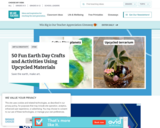
30 crafts you can do at home or school with recycled materials. Get Creative!
- Subject:
- Arts Education
- Visual Arts
- Material Type:
- Activity/Lab
- Author:
- Jessica Mcfadden
- Posted Jessica Mcfadden
- Date Added:
- 06/01/2020
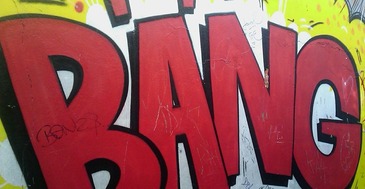
In Grade 5 Visual Arts, students are asked to create artworks that express ideas about and draw inspiration from pop culture.
Students are encouraged to create artworks using a variety of concepts (like positive space), forms (like graphic design and photography), and media (like mixed media and paint).
Students are also required to examine the influence of pop culture on their own lives and societies, while investigating the work of selected pop culture artists (like Andy Warhol, for example).
Explore this collection to find resources and activities suitable for Grade 5 Visual Arts.

30 crafts you can do at home or school with recycled materials. Get Creative!

Students will observe dance movements depicted in a drawing and a painting. Partners will use simple lines to draw their partner's movements and paint dance costumes on the figures using various brushstrokes. Students will write a persuasive speech to the school superintendent explaining why they believe dance should be a regular part of the curriculum. They will then model dance movements for classmates in teams of four and recite their persuasive speech to the class.
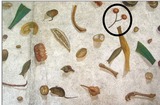
This resource outlines the Ancient Greek art form, Trompe L'Oeil. Several resources are provided to learn more about this concept. Links for realistic drawing tutorials from Art for Kids Hub are also included.

This resources includes a couple of Ancient Greek Vase Project ideas. Vases and jugs were a very popular Ancient Greek art form.

Children’s drawings have a wonderful inventiveness, energy, and variety.
Bring children's drawings to life by animating characters to move around!

This site explores the elements of art and principles of design with videos, examples and lessons.
The elements and principles of design are the building blocks used to create a work of art.
Elements of Art are the visual "tools" that artists use to create an art work - they are what makes up an image or an art object: line, shape/form, value, color, space, and texture.
Principles of Design are the ways artists use the Elements of Art in an artwork - this is "what we do with the Elements" - how we arrange them, how we balance them, what is being emphasized, etc. The principles are: balance, contrast, repetition, emphasis, and unity.
Be sure to check out Art 2 - Lesson plans for intermediate Art program @ https://resourcebank.ca/courses/art-1-lesson-plans-for-beginner-art-program

Art 2 offers a two semester program:
Semester 1
Focus on drawing skills:
creative drawings, shading techniques review and practice, pen and graphite drawings, texture shading, colored pencils and oil pastels techniques, design stylizing techniques, non-traditional art media, mix-media, introduction to watercolor pencils, watercolor techniques, etc.
Semester 2
Focus on drawing, painting and printing media:
unusual painting media, creative designs - practice eye-hand coordination, pen and ink drawings, pattern values and creative application, introduction to silk screen printing, optical illusions and OpArt - review perspective, collages and acrylic paintings, composition and colors in Art.
Be sure to check out Art 1 - Lesson plans for intermediate Art program @ https://resourcebank.ca/courses/art-1-lesson-plans-for-beginner-art-program-2
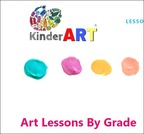
Here you can browse through art lesson plans by age or grade, from Preschool through High School.
The site includes a "What you can expect" of students artists at each age level.
At KinderArt "Our mission is to create and provide art lesson plans that parents and teachers can use in their home and school classrooms. We aim to offer ideas that make use of readily available materials that won't break the bank."
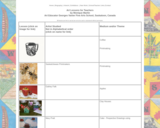
Art Lessons for Teachers
by Monique Martin
Art Educator Georges Vanier Fine Arts School, Saskatoon, Canada
Includes: printmaking, sculpture, perspective drawing, colours, mixed media, chair design, clay, architecture, cultural art, drawing, painting, quilting, and much more!

This collection of art videos will support teachers and students in their quest to learn more about art.
Videos include: Matisse, Chagall, Michelangelo, pointillism, Britto, Chinese Dragon, Dali, Pollock, Tin Art, Kindness Rocks, Landscapes, Fashion Design, Collaborative Portraits, Zentangle, Howard, Dhurrie Rug, Magritte.
There are great ideas for lessons here, information about famous artists and great individual or collaborative projects.

Paint a vivid picture in your reader's mind with good descriptive writing! Artwork provides the perfect starting point for practicing descriptive writing that conveys color, shape, line, and mood.

Teachers can search their database for lesson ideas and art history assignments.

A collection of hands on arts and crafts activities for preschool to grade 5.

This site offers visual and performing art lessons from kindergarten through high school. Many of the lessons can be integrated into core subjects such as Math, Language Arts, Science, or Social Studies. Opportunities for creativity are some of the building blocks of child development and concept acquisition. Lessons are categorized by grade for easy retrieval.
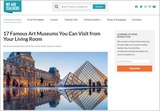
Most major art museums around the world offer virtual tours and resources for free. We Are Teachers offers a long list of virtual museum tours, including Benaki Museum, The Frick Collection, The J. Paul Getty Museum, The Los Angeles County Museum of Art (LACMA), The Louvre, Metropolitan Museum of Art’s #MetKids, Musée d’Orsay, Museo Frida Kahlo, The Museum of the World, The National Gallery, The National Gallery of Art, Rijksmuseum, San Francisco Museum of Modern Arts, The Solomon R. Guggenheim Museum, Tate Modern: Andy Warhol Exhibit, The Van Gogh Museum, The Vatican Museums.

Students use washable paints, markers, and construction paper to illustrate a month from the traditional Cree Calendar
Students will be able to:
illustrate a month from the traditional Cree calendar;
demonstrate an understanding of the changes, cycles and patterns that occur in nature through words and images;
draw/paint geometric and organic shapes;
create the illusion of depth in space using size;
connect personal life experiences to their artworks.
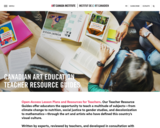
Canadian art is a door to learning about a wide range of subjects.
The Art Canada Institute teacher resource guides presented here offer students the opportunity to study a multitude of subjects—from environmental awareness to activism, social justice to gender studies, politics to computer science (to name a few)—through the art and artists who have defined this country’s visual culture.
Following our provinces’ education curricula, the teacher resource guides provide multidisciplinary learning activities that reveal how Canadian art powerfully reflects our world so we can better understand it.
Activities for K-12!

This website outlines the steps to create a Chinese Flower Vase art project for kids.

« La chaîne éducative Cinéma autochtone vise à engager les apprenants dans des discussions sur l’histoire coloniale du Canada et son impact sur les communautés autochtones. Nous vous invitons à découvrir notre collection de films réalisés par des cinéastes autochtones et par des gens qui sont leurs alliés. »
Accédez à de ressources pédagogiques connexes en utilisant votre adresse courriel scolaire pour vous connecter à la plateforme ONF « CAMPUS » : https://www.onf.ca/campus-canada/#campus-subscription-section
**Visionnez toujours les films avant de les montrer aux élèves - cette collection n'est pas nécessairement destinée aux enfants.**

Using different writing/drawing materials (e.g., markers, color pencils, pastels, etc.), students learn how to communicate different moods and/or feelings to support their written ideas and how authors do the same through their work.